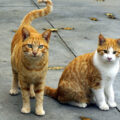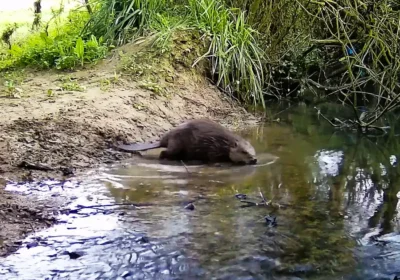By Susie Curtin.
January is named after Janus, the Roman God with two heads – one looking towards the past and the other towards the future. Janus represents transition and a doorway into a new beginning.
With the midwinter festivities far behind us, January is a month of change and optimism – it’s the only time in the year when anything seems possible.
Although I have never believed in New Year resolutions, entering this first month is like pressing ‘reset’ for me.
Dark winter nights afford me time and space to consider and treasure what is important to my wellbeing and what is not, and to decipher the difference between what I want and what I need – especially so in 2023 as I must cut my cloth a little smaller.
For many people I know, January is perceived as a depressing month – it is cold, dark and there are bills to pay.
Yet outside my door, I see only hope. In fact, it is one of my favourite months in the countryside calendar.
As I stride out towards the river, the bright blue sky illuminates a reawakening land. The oak and ash trees are in bud and chandeliers of catkins have magically appeared overnight to light up the hedgerow – purple-maroon for alders and silver birch, and golden green for hazel – all made up of individual flowers ripening for pollination by the winter winds.
The orange fronds of the willow trees and the cardinal reds of the dogwoods bring splashes of colour amid the bleak architectural splendour of trees that line the curvature of the hills.
The air is cool and clean and there is a wispy light that grows more intense and lasts two minutes longer each day.
The wood pigeons are already pairing up and doing their comical bobbing mating rituals, male wrens begin their search for nest sites to satisfy their females and the chaffinches are shining with the onset of their breeding plumage.
In fact, January is resplendent with bird-life – the reed-beds are bustling with waders while starlings from the East arrive to give us their unique murmurations that colour the sky in black tidal waves.
There are flocks of lapwing, chattering fieldfare, redwing and snipe that hunker down in the sodden marshes, plus groups of tiny, long-tailed tits who huddle together to fend off the cold.
Then, of course, there are the first snowdrops and spring bulbs that are slowly emerging from the cold earth – beacons of life that light the future spring.
Back home in my garden, I watch the brilliant red sunset and then the crepuscular descent into night – all the time listening to our greatest winter songsters, the little robins who forage in the gloom and sing to defend their lonely territories.
As their sweet, melancholy song rings out into the hollow darkness, a shiver tells me it is time to go in and light the fire, and hunker down for the evening.
Dr Susie Curtin (email curtin.susanna@gmail.com)









Leave a Reply